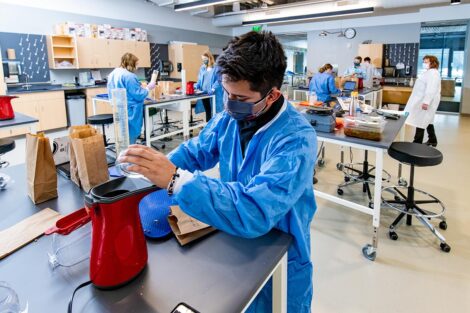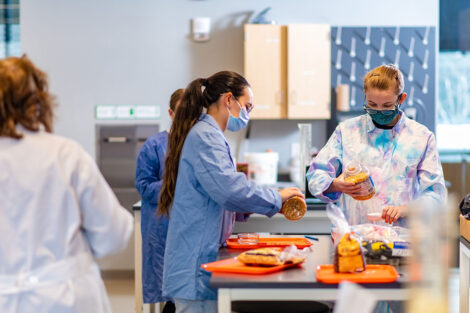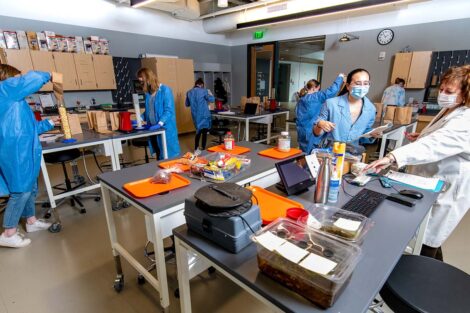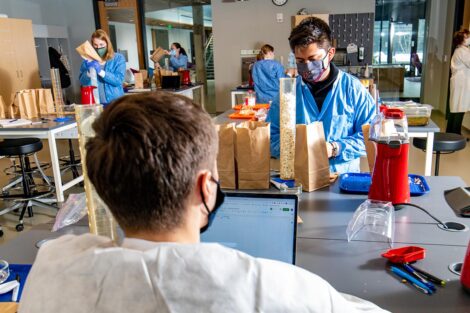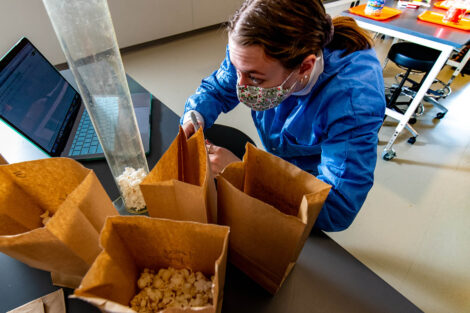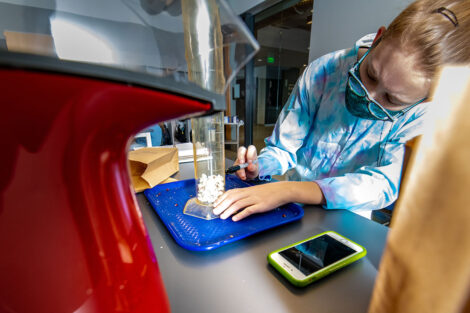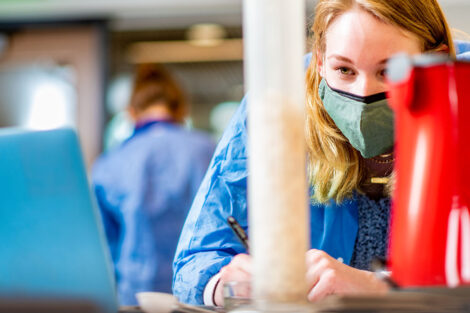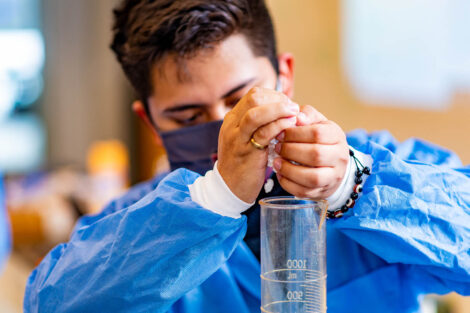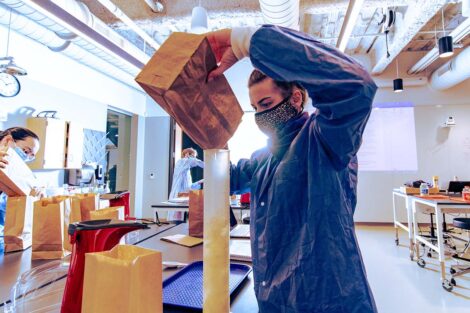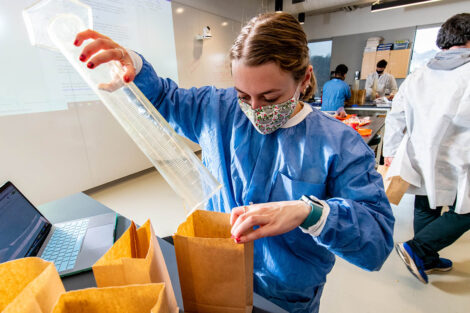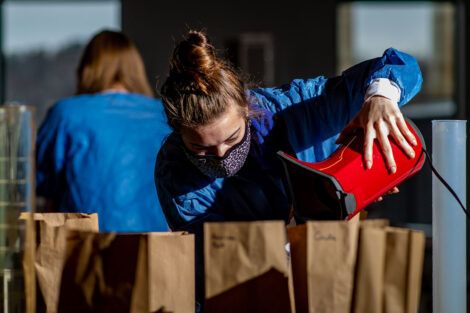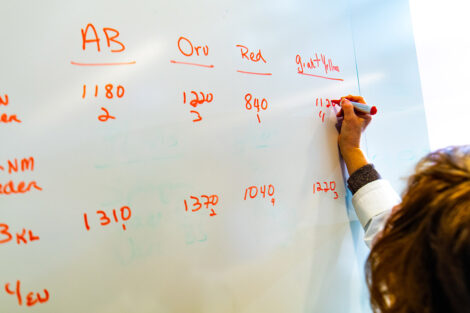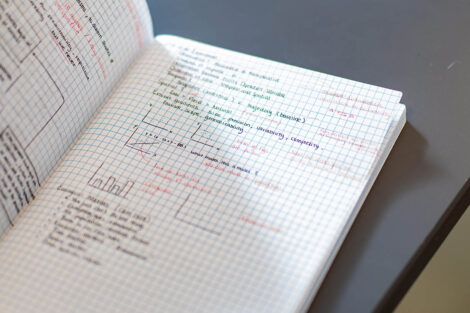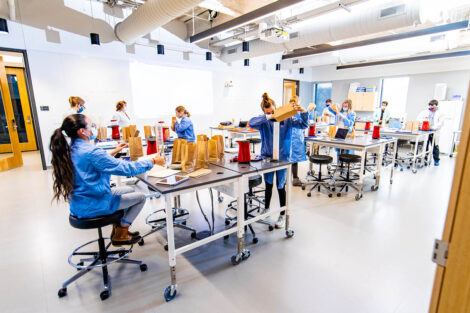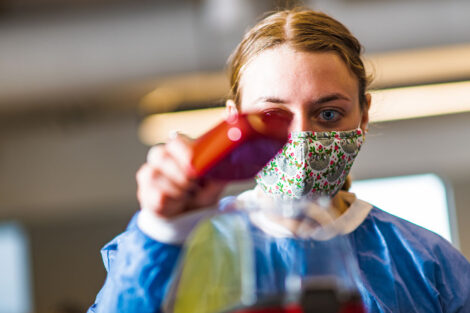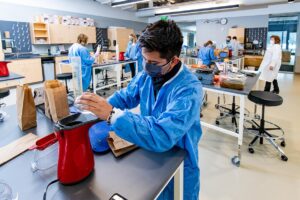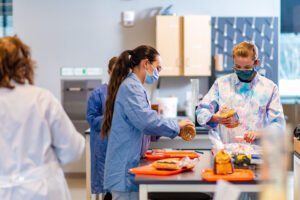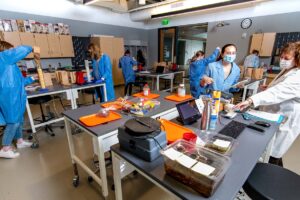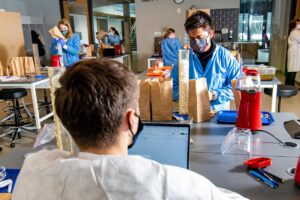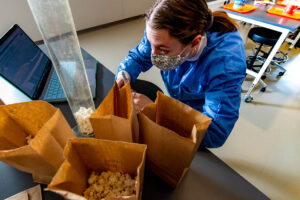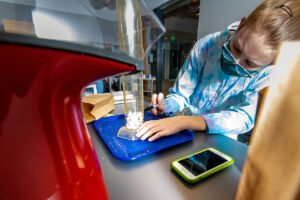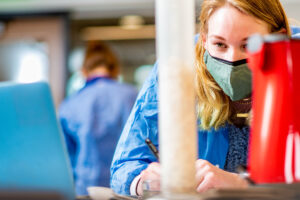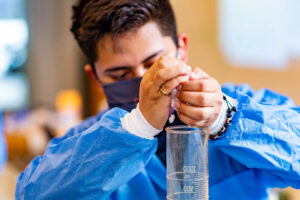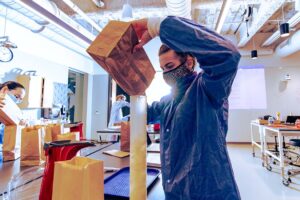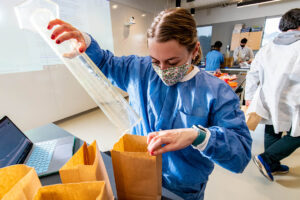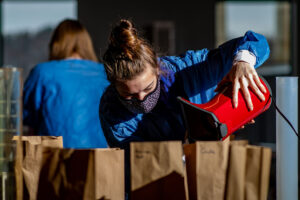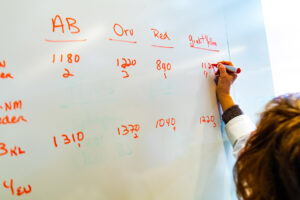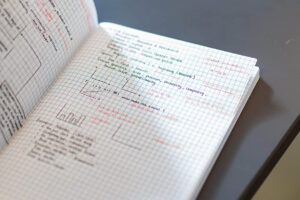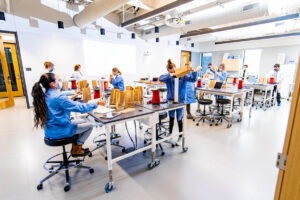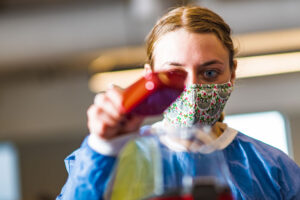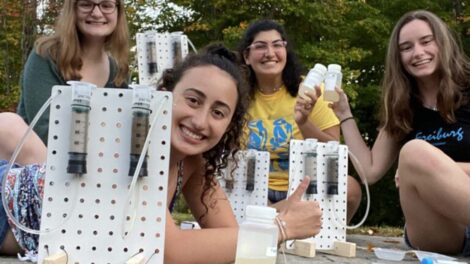Notice of Online Archive
This page is no longer being updated and remains online for informational and historical purposes only. The information is accurate as of the last page update.
For questions about page contents, contact the Communications Division.
Microscopes and test tubes are tools you'd expect to see in a biology lab. But air poppers? Prof. Nancy Waters has a unique way of teaching an important lesson
By Katie Neitz
Nancy McCreary Waters kicked off her spring 2021 ecology/biology lab with one of her traditional lessons that is anything but traditional.
The associate professor of biology has students air pop varieties of popcorn to develop their critical thinking and collaborative abilities when analyzing data.
Waters provides students with what seems to be a detailed protocol for the lab. Students quickly realize there is room for ambiguity. When their decisions are made in a vacuum, without consulting with their peers, they introduce variability, and that impacts their sample of the data.
For example, the protocol indicates measuring two tablespoons of unpopped corn, but students quickly murmur amongst themselves: Should it be leveled off? Eyeballed? What if kernels are smaller? Or larger?
As they move through, they wonder: Do we include kernels that don’t pop in the volume? What if it falls on the floor? Should we tap or shake the air spaces in the graduated cylinder? I did mine in a different order than you … will that matter?
“This exercise grew out of my desire to come up with a way to disarm students from thinking conventionally,” Waters says. “In a typical lab exercise you might be focused on identifying the organism correctly or your calculation of diversity. Those details will matter. But it is also useful to approach an unfamiliar data matrix with the tools to make sense of trends and patterns. The science of ecology is full of those judgments.”
The popcorn lab underscores the importance of using all of your critical thinking when confronting any kind of data. “Students need to communicate with one another and work collaboratively to make the most defensible consistent judgment,” Waters says. “I want students to listen not only to one another, but also to what these data are telling them.”
Note: These photographs were taken in accordance with COVID-19 safety guidelines.
